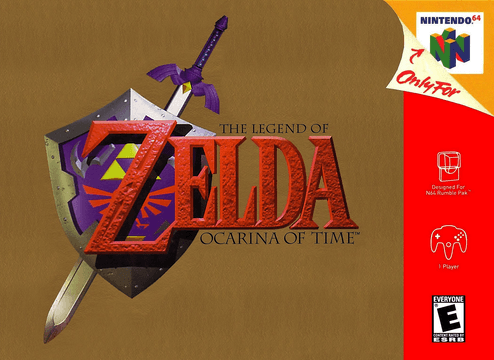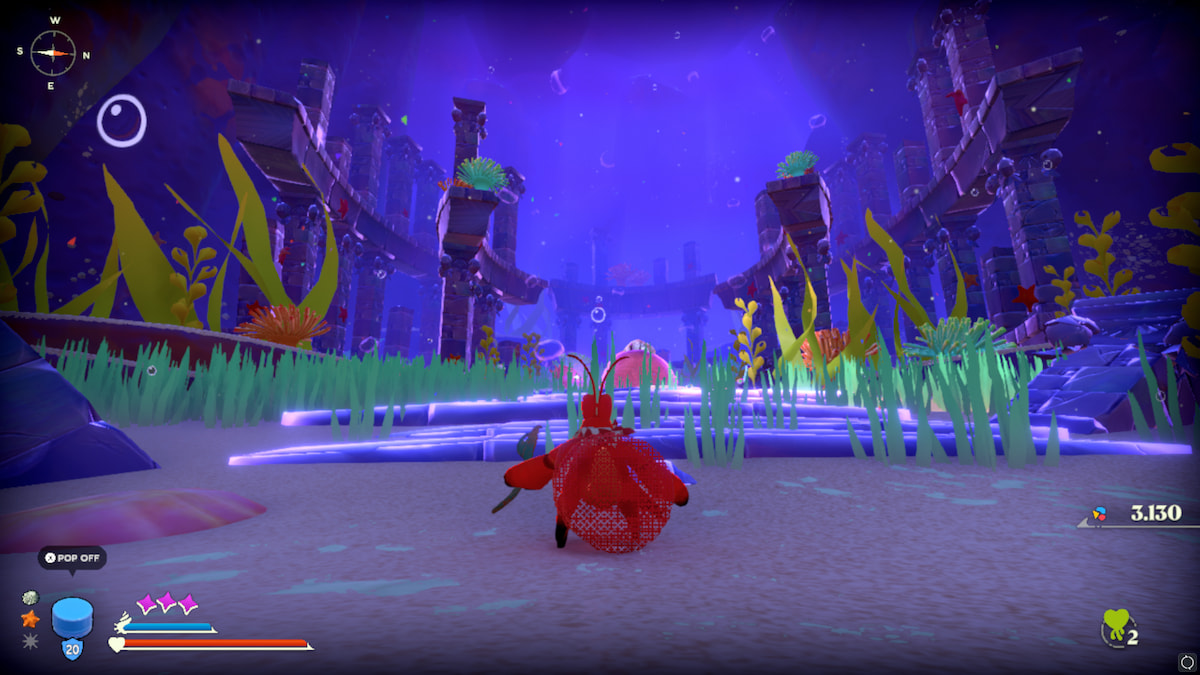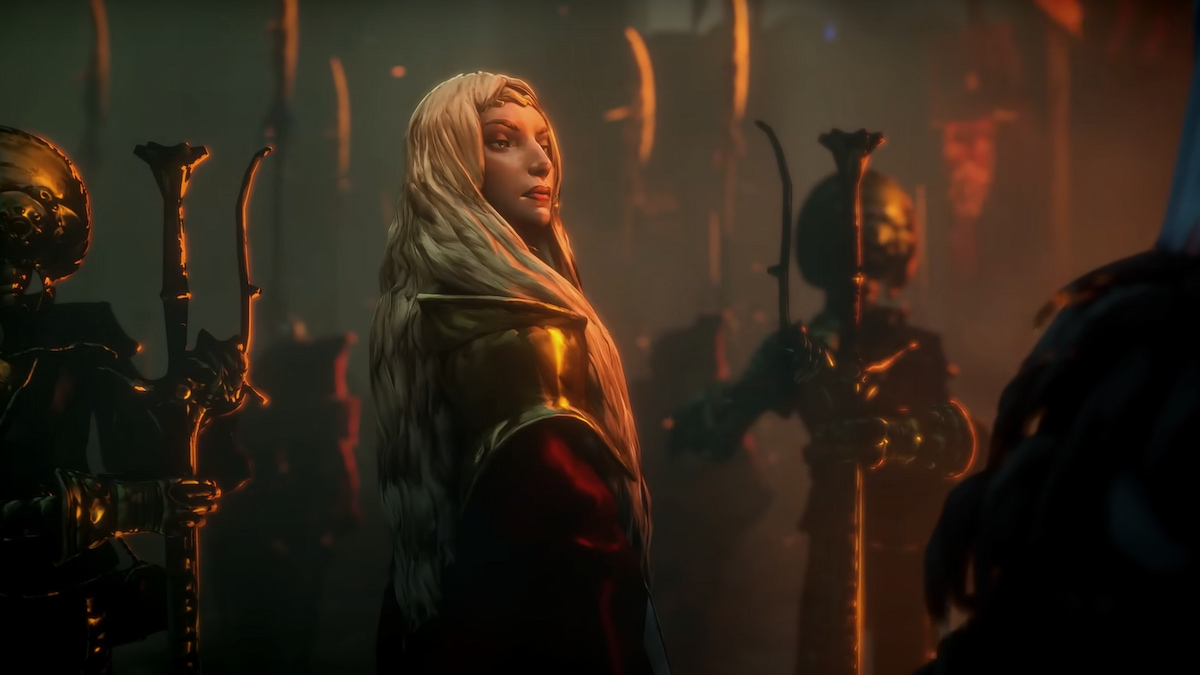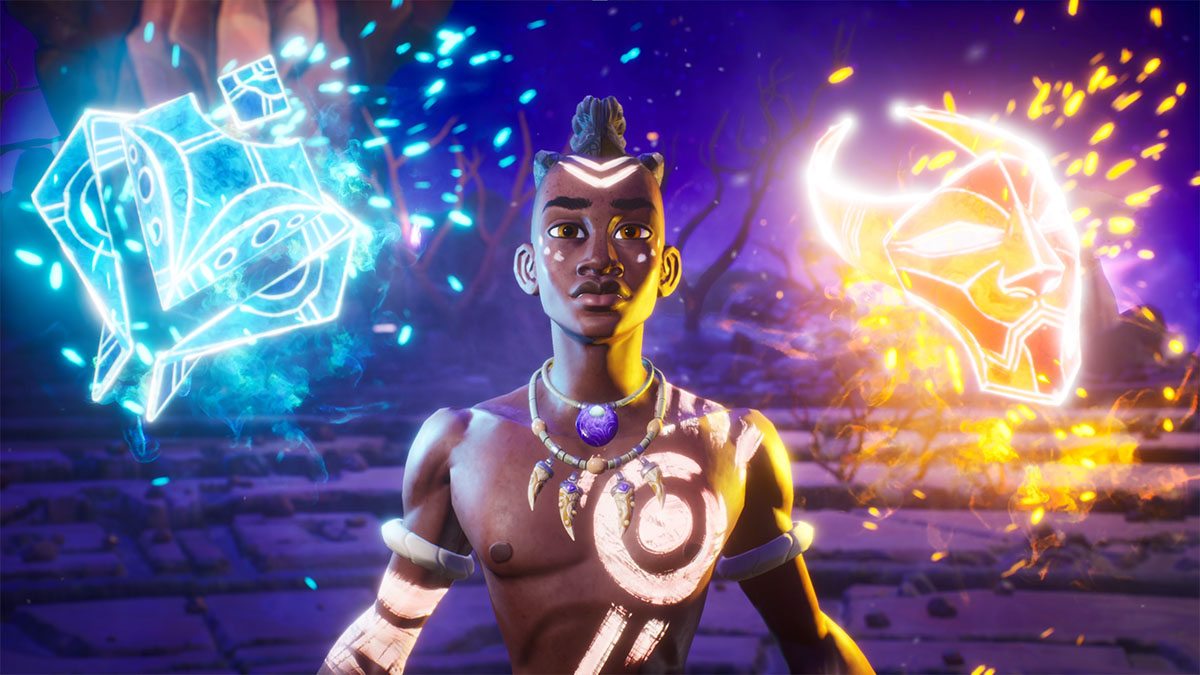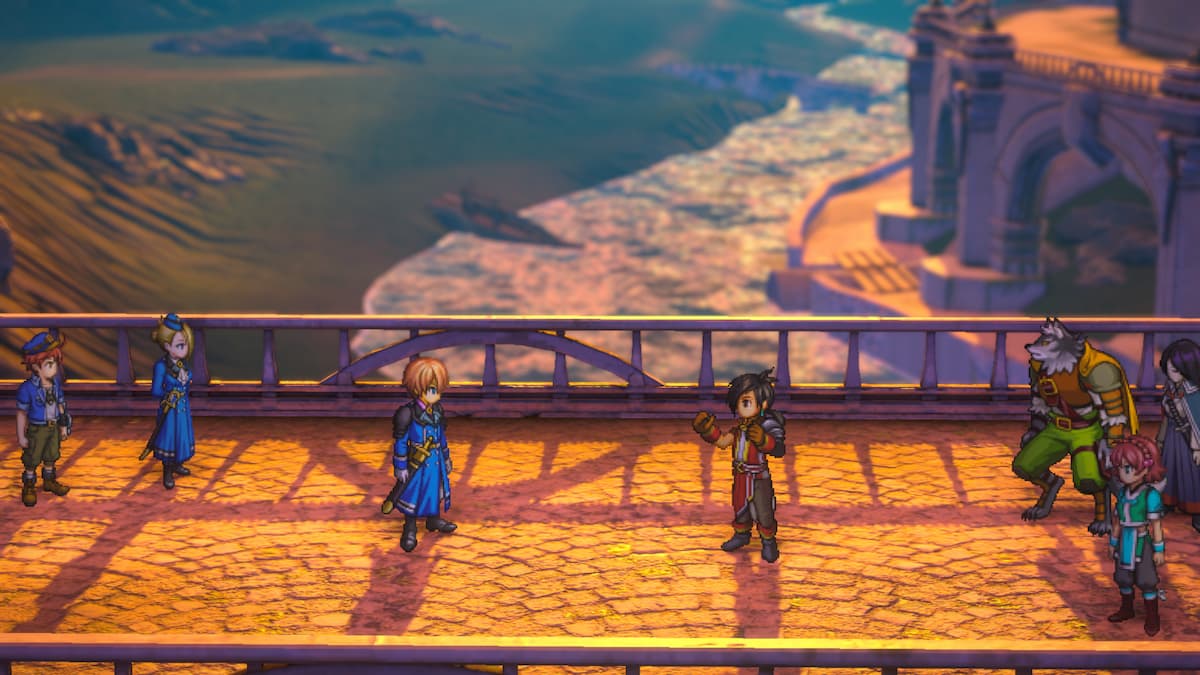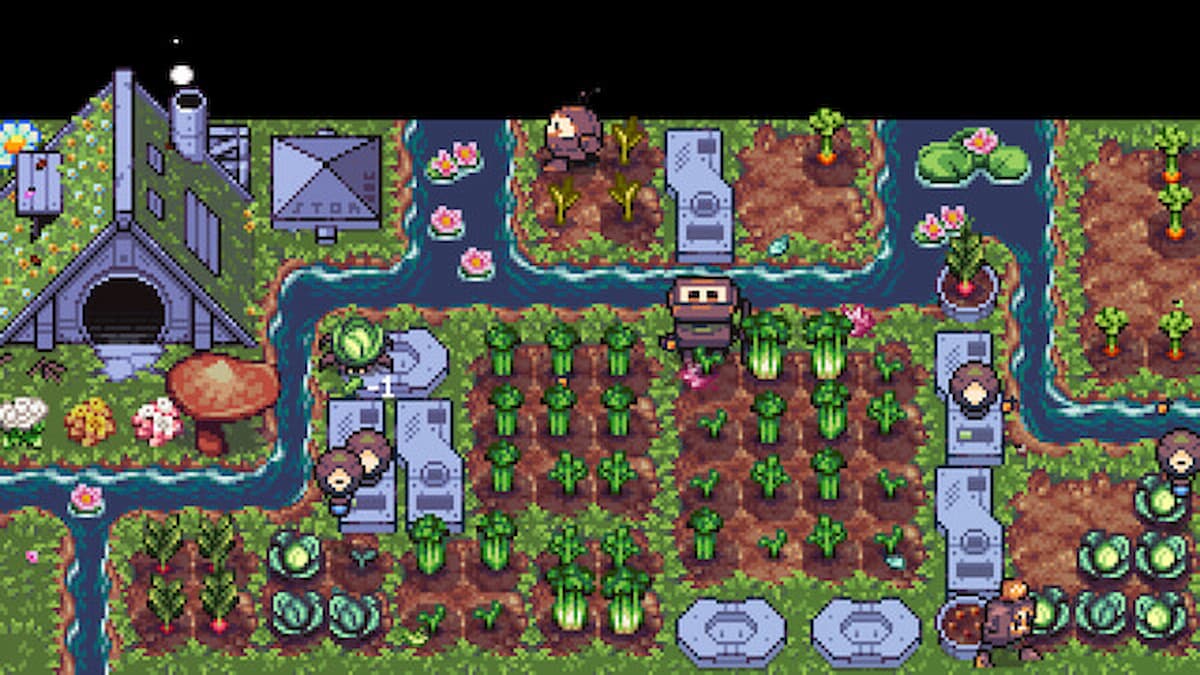Week 5 of the Legend of Zelda Rewind Review has come upon us. At this point in the series and we leave the Gameboy and SNES behind as we venture into the 3rd dimension with The Legend of Zelda: Ocarina of Time.
The Legend of Zelda: Ocarina of Time was first released in 1998 on the Nintendo 64. Since then it has had a consistent track record of being released on just about every single Nintendo home console compatible with a 3D environment. The game was also remastered for the Nintendo 3DS, bringing the game into the realm of portable gaming for the first time. With so many re-releases – more than the fan-claimed superior A Link to the Past – it raises the question of: why does this game do so well?
As with all Rewind Reviews, The Legend of Zelda: Ocarina of Time will undergo a review process through the eyes of a modern critic. No nostalgia glasses, no excuses, no rationalizing hardware limitations, and no sparing myself from angry fans and readers.
Nothing will excuse this game from anything that we – as modern gamers – would expect to see in the genre today. So without further ado, let’s get told off by Mido, and travel through time in The Legend of Zelda: Ocarina of Time on the Nintendo 64, Gamecube, Wii, Wii U, and 3DS (wow…).
The Plot
Like its predecessor, Link’s Awakening, The Legend of Zelda: Ocarina of Time once more has the benefit of having an onboard dedicated writer. Since this is also the first time that The Legend of Zelda has been on a 3D console, it also has the added benefit of increased detailing on character models and environments. As such, Ocarina of Time is essentially set up to be the first properly story-driven Zelda title. And it succeeds.

In this game, Link is presented as the unwilling hero. Being nothing more than a young Hylian boy living as an orphan among the Kokiri tribe who takes one too many naps. This changes when Link is called to action by the Great Deku Tree after he has been infected by Ganondorf with the parasitic arachnid – Gohma. Killing the arachnid is not enough, however, and the Deku Tree begins to decay after presenting Link with the prophecy of the Triforce.
Filled with despair, Link runs away (in an in-game cinematic) from the Deku Tree before promptly being blamed for the death, and banished from his home, by the Kokiri’s self-proclaimed boss – Mido. With nowhere left to call home, Link sets out for Hyrule Castle on behalf of the Great Deku Tree in the hopes of finding out what happened to the guardian of the Kokiri tribe.
Over the course of his adventure, the Ocarina of Time Link (who is the first confirmed separate “Link” in the series at this point) meets various people from the four main factions: Hylians, Gerudo, Humans, Gorons, and Zoras. The game sports a wide range of unique models, and each character is memorable in their own right. Like Link’s Awakening, many of the side-character NPCs are memorable as well, such as the beggar of Hyrule town, or the infamous Biggoron of Death Mountain Crater. Each character is also lovable in their own right, and it comes to no surprise that – to this day – fan-art is still being created for this game.
This image features almost every character model from The Legend of Zelda: Ocarina of Time’s N64 version (the Adult Link model is from OoT 3DS), except for the bulk of Ocarina of Time’s Temple bosses
The only fault I could place upon Ocarina of Time’s story is that it starts the trend of incredibly linear plots and dungeons. However, most of these complaints will be covered in the “Gameplay” section of this review as the story is virtually unharmed by the gameplay itself.
The Gameplay
The Beautiful:
The Legend of Zelda: Ocarina of Time does not stray too far from the core gameplay mechanics of the mainstream of Zelda titles. Each dungeon is still navigated by defeating enemies, using found items, and finding keys. There are also numerous hidden walls and holes that can be accessed only by using bombs, and later equipment. Essentially, Ocarina of Time successfully turns A Link to the Past into a 3D game. However, there are also a number of features that Ocarina of Time adds to the series as a whole. The first additions have to do with the 3D environment itself.
Look at all this 3D space to explore!
Thanks to the Nintendo 64’s power, character models were given detailed designs that matched their artwork for the first time. The most notable example of this is the model for Link. While previous artwork had depicted Link as a blonde-haired young man, Ocarina of Time is the first game in which he is presented as such in-game. Another change is the dress design of Princess Zelda which has more or less stayed the same ever since this iteration except for some art-style differences.
Another concept that was introduced in Ocarina of Time is the multiple races. Ocarina of Time debuts many of the well-known races in the Legend of Zelda franchise such as the Kokiri, Gorons, Gerudos, Hylians, Deku Scrubs, and Sheikah tribes. It is also the first game to present us with the Zora race in the form that we know them today, trading their green and monster-like appearance from A Link to the Past and earlier games, for the blue sleek, humanoid designs.
Gameplay was also heavily reworked to allow Link to fight in a 3D environment. The first adaptation was the invention of the Z-Targeting system (seen above). By pressing this button, players become locked onto a particular object or enemy, ensuring that the camera is always chasing point of interest until the player rather releases the button, or the object is destroyed.
This also changes up the process of combat since players can no longer swipe their swords at flying enemies, and as such they must rely on other weapons or modes of combat to destroy them. This is perhaps the most innovative part of Ocarina of Time since at this point in the series most enemies could be easily dealt with by a flurry of sword swings. It is for this reason that I would argue that the 3D Zelda series – much like the 3D Metroid series – provides a combat-oriented version of the game, as opposed to a puzzle or adventure focused game.
Ocarina of Time is also the first game to allow players to play the songs on a musical item – as opposed to simply selecting them. It is the first game in which playing music is a key component.
The Good:
Aside from its core gameplay mechanics, Ocarina of Time also has two side quests that can be completed.
The first of these is the House of Skulltula quest which will grant Link various upgrades and items unnecessary for the game’s completion. These include: the adult wallet, stone of agony, giant’s wallet, bombchus, and finally a piece of heart. To get these items, Link must help release the Spider’s Curse from the family living in the House of Skulltula by collecting all 100 Gold Skulltula Tokens by killing Gold Skulltulas hidden all across Hyrule.

Don’t you just want to give him a hug?
This quest is perhaps one of the most underappreciated since the themes of greed leading to the family’s curse, as well as the nightmarish design of the cursed family members is one that is often overlooked due to the quest’s unnecessary nature.
The other side quest is a trading-sequence quest starting from a simple Cucco egg, to receiving the two-handed Biggoron’s Sword. This trading quest is, of course, carried over from Link’s Awakening where Link won a Yoshi Doll from the Trendy Game, and traded up to get the Magnifying Lens required to find the true path through the Wind Fish’s Egg.
The Biggoron’s Sword
While the Biggoron’s Sword is not required to complete the game, it does offer an interesting alternative to the Master Sword since Link cannot defend while using it, sacrificing safety for extra damage. It can also be used to defeat Ganon’s final form without the need to shoot light arrows. Also, who doesn’t want a ridiculously huge 2-handed sword?
Enemy variety has taken a small hit as a result of the transition to 3D, sporting only 80 enemy types, and 9 bosses (11 if you count forms). While this is somewhat disappointing, it should be remembered that many of the enemies in earlier Legend of Zelda titles were simply recolours that did extra damage or moved faster. As such, Ocarina of Time ironically had the highest unique enemy diversity at the time of its release. Bosses are notably the most intimidating in the series thus far as well, with the atmospheric battle with Ganon being the highlight of the game.
Ocarina of Time’s decisive battle against Ganon is perhaps one of the most memorable battles in Zelda history
The Bad:
While Ocarina of Time does a number of things well, it does have some minor faults. One of these faults is the lack of difficulty. While the Water Temple has received a notorious status for being one of the most confusing dungeons in the game, if the player has any basic coordination or navigations skills it is actually quite simple to complete while damage is scarcely taken unless you foolishly run around blindly (and even then). In fact, the only temple I had any trouble with was the Spirit Temple, and only because the Iron Gauntlet is a pain in the… lower-rear tunic area. Yes. That.
Another issue is the abundance of “useless” items. While acquiring the magical fire and ice arrows – as well as the numerous Great Fairy spells – is fun and all, the practicality of these items in-game is pretty limited. The only arguably useful spell in the game is the Din’s Fire spell which creates a shockwave of fire. This can be used to enter the Shadow Temple without having to shoot numerous fire arrows or using deku sticks, or to damage Dark Link in the Water Temple. However, other than those two uses it is relatively useless. Nayru’s Love and Farore’s Wind are similarly unnecessary unless you truly believe the game dishes out too much damage, or that dungeons are hard to exit.

Items highlighted by the red box are virtually useless outside of the dungeon they are required or unnecessary, in general
As for the Fire, Ice, and Light arrows: they are debatable. Fire arrows are necessary at least on one or two occasions since you need to light torches, and they are useful for solving puzzles without having to painstakingly run about with a supply of Deku sticks.
Ice arrows are a bane on your existence as they waste your time both in their acquisition, and their practicality. They are never used for anything, and quite frankly are not worth finding aside for completions’ sake. Both arrows in terms of their usefulness in combat is limited to eating away at your precious magic meter. As for the Light Arrows, these are limited to use against Ganondorf since they do not 1-hit enemies like they do in The Legend of Zelda: Wind Waker.
As with A Link to the Past, I also have a grievance against the return of the magic meter. While Din’s Fire would be overpowered if it were usable continuously, neither the spells nor the magic meter itself need to exist. There is no practical use for it, nor is there any practical use for the spells. As such, I can only conclude that this was a complete waste of effort. It is a mildly appreciated waste of effort, but a waste of effort nonetheless. The only item that requires it and is “useful” is the Lens of Truth, which is only used in one dungeon.
Din’s Fire looks great and all, but does it warrant the return of the magic meter? Could it not have used a timer instead?
Earlier in this review I also mentioned that this game is incredibly linear compared to previous titles. This is both a bad and a good thing. On the lighter side, it means that players can never enter a dungeon without the necessary equipment. However, this also means that the player is simply traveling from point A to point B with little or no derailment along the way. It also makes it incredibly difficult to stray off the path and discover parts of the world that the player would otherwise find if they were left to roam. This is only made worse with the constant droning of Navi the Fairy who constantly reminds Link that he has a “mission” to attend to.
I should also make a slight note that the inability to set the sensitivity of the first-person controls is a pain. Not really game breaking since the game was developed around it, but it wouldn’t hurt if you could adjust how fast the camera pans about.
The Ugly:
The first and most notorious fault of The Legend of Zelda: Ocarina of Time is the equipment system. While having interchangeable equipment is certainly an innovative first in the series, it is also one of the crudest designed ones in Ocarina of Time. The reason for this is best illustrated by the equally notorious Water Temple.
In the Water Temple, Link must navigate the bland blue-painted hallways of the Zora’s place of worship. To do so, Link must continuously switch between the Iron Boots and his Regular Boots in order to sink or swim around. This would be a fine mechanic for a temple… if not for the fact that Link needs to switch his boots every 5 seconds via the Equipment Menu.
The equipment subscreen
Unlike later additions in the series, Link’s Iron Boots do not function in a similar fashion to his items. Instead, players must press the Start Button, navigate to the “Equipment” menu, then return to the game. This process can take upwards of four seconds. While that does not sound like much, it can become increasingly frustrating once you have to take them on and off several times in a row.
As for the Water Temple itself, as I mentioned: it is relatively easy if players have basic navigation know-how. However, the irritating part for players who are completely adept at navigation is the constant need to play Zelda’s Lullaby to raise and lower the water level. As such, we are not only spending 8 seconds each time we need to take the Iron Boots on and off, but also about 12 seconds each time we need to change the water level. It is not a matter of difficulty, it is a matter of faulty design. While this does not completely ruin the experience of the game, I can imagine there must have been at least several ways this could have been improved.
The Remastered Godliness:
Okay, once again I’m adding a new section to this review that I have never used before. Why? Ocarina of Time 3DS fixes just about everything.
Aside from the front-end graphical improvements, the equipment system is completely revamped, and the controls are re-adjusted. The gyro controls (while spawning some initial discomfort) is actually well-received. I cannot imagine going back to the slow controls when I can simply shift about the screen a bit to aim exactly where I want to in a flash.
The HUD has been moved for the most part to the bottom screen, allowing for easy access to your equipment, dungeon map, quest status, and so on. This also consequently allows for the player to have an unobstructed view of this game’s beauty, which is a nice touch. The Ocarina is also permanently designated to the touchscreen so that you can use it at any time without having to re-equip it, which is considerably useful since the game hardly has a time where you don’t need it.
Even the Water Temple has been fixed as a result of the changes. Since the Iron Boots are now an item as opposed to a piece of equipment, players no longer have to wait through the lag time of switching boots.
Songs are also accessible via a “songs” button, so players who have a hard time remembering the songs will be able to play them at a touch of a button. The Water Temple’s redesigned color scheme (right) also makes it easier to navigate for those who have difficulty finding their way about the original blue corridors by adding color-coded hallways to the mix. The higher draw distance helps as well since players can now see all possible entrances at all times. This was impossible on the Nintendo 64 as doing so would further decrease the already choppy-looking 20 frames per second gameplay.
All of this is without mentioning the newly added Master’s Quest mode. Originally included on the Gamecube Ocarina of Time Promotion Disk, Master’s Quest mode increases the difficulty of the game substantially.
In Master’s Quest, every dungeon has been reworked in such a way that players must take advantage of all the game’s mechanics. This includes certain mechanics that are never explained in the actual game such as the hookshot’s ability to latch onto cows, the scarecrow, and wooden surfaces. Enemy damage output is increased, Link’s damage output is decreased, and the encounters of late-game enemies has been spread out to the entire game. If that wasn’t enough, the map is also reversed to further disorient long-time players.
If players prefer to have the original N64 appearance with greater difficulty provided by Master’s Quest, I recommend picking up the rare Gamecube disk if you ever spot it. Otherwise, I advise picking up the readily available 3DS version. I cannot recommend it any more than I already have.
The Presentation

In the past I have made the claim that unlike old 2D sprite games, early 3D games do not age well. In the case of The Legend of Zelda: Ocarina of Time, this is also the case. The original Nintendo 64 graphics – while charming – are extremely dated. Grass looks like the result of drinking one too many St. Patty’s Day cocktails, and other textures show just how dated the game is. Character models have suffered the least, but that is not saying much as their low-polygon faces are difficult to take seriously. That said, the game doesn’t look bad per se, it just looks old. While I would hate to admit it, personally, the game suffers as a result.
However, redemption for Ocarina of Time comes in the form of the 3DS remaster. Everything has been given a fresh new coat of paint, and the 3DS game has been optimized to a constant 30 frames per second, a great improvement over the original Nintendo 64’s choppy 20 FPS. Everything just looks better, and it doesn’t sacrifice the charm of the original game in the process. The improvements work best to highlight the eerieness of certain settings such as the Shadow Temple, and that just makes the game that much better.
The Shadow Temple is perhaps the greatest example of what the Ocarina of Time 3DS remaster did to improve the immersion of the game
While Ocarina of Time’s graphics needed a severe improvement, the soundtrack is timeless. Much like A Link to the Past, many of Ocarina of Time’s themes have been reused in future games, and that is by no means a bad thing. Each ocarina song sounds unique despite only using 5 melody tones to play each song, and the background music tracks take after Link’s Awakening’s use of unique dungeon tracks. This also carries over to each overworld area, providing a truly immersive experience by making each area feel like a different place with a unique atmosphere. You can listen to the soundtrack for yourself in the video below:
The Verdict:
The Legend of Zelda: Ocarina of Time is a timeless piece, that much is for certain. If it wasn’t, players wouldn’t be speaking so fondly of this fan-favorite for so long or at all. It did a great job of introducing The Legend of Zelda to the world of 3D gaming, and it also did a stellar job of creating a standard that future 3D Zelda games would have to live up to.
Everything about this game is great, however, I am divided on what score to give it due to the presence of “bad” and “ugly” factors. Ocarina of Time is unique in the sense that it essentially has 3 versions I had to review: the original, Master’s Quest, and 3DS remastered versions of the game.
As a result of the multiple versions, I have decided to split the game into 3 separate final scores:
The Legend of Zelda: Ocarina of Time: 7/10
The Legend of Zelda: Ocarina of Time/Master’s Quest: 8/10
The Legend of Zelda: Ocarina of Time 3DS: 10/10
While the original Ocarina of Time was a great experience in the late 1990’s, Master’s Quest improves the lack of difficulty, while the remaster fixes just about everything else. I definitely recommend The Legend of Zelda: Ocarina of Time as a starting point in the series for being not only the most easy-to-access game, but also one of the most player friendly.
With that, I bring Week 5 of my Legend of Zelda Rewind Review to a close. What do you guys think about Ocarina of Time? Is it better, worse, or on-par with A Link to the Past? Do you think it deserves its place as the highest-priority re-release Nintendo title, second only to Super Mario Bros.? Leave your opinions in the comments section below!
Also, be sure to check back on this article or the GameSkinny front page for future reviews, as well as swords and sorcery action as we make our way from the original 1986 release of The Legend of Zelda on the NES to the 2013 release of A Link Between Worlds on the 3DS!
Reviews in this Series:
- The Legend of Zelda (NES)
- The Adventure of Link (NES)
- A Link to the Past (SNES/GBA)
- Link’s Awakening/Link’s Awakening DX (GB/GBC)
- Ocarina of Time/OoT 3DS (N64/3DS)
- Majora’s Mask/MM 3DS (N64/3DS)
- Oracle of Ages/Oracle of Seasons (GBC)
- Four Swords (GBA)
- The Wind Waker (GC)
- Four Swords Adventures (GC)
- The Minish Cap (GBA)
- Twilight Princess (GC/Wii)
- Phantom Hourglass (DS)
- Spirit Tracks (DS)
- Skyward Sword (Wii)
- A Link Between Worlds (3DS)
- Tri Force Heroes (3DS)

